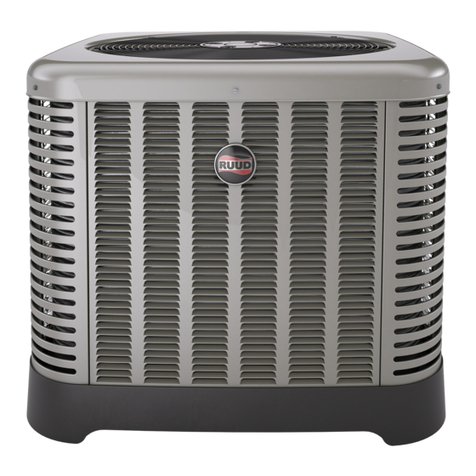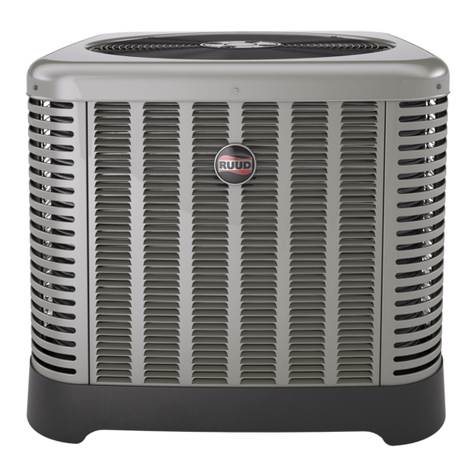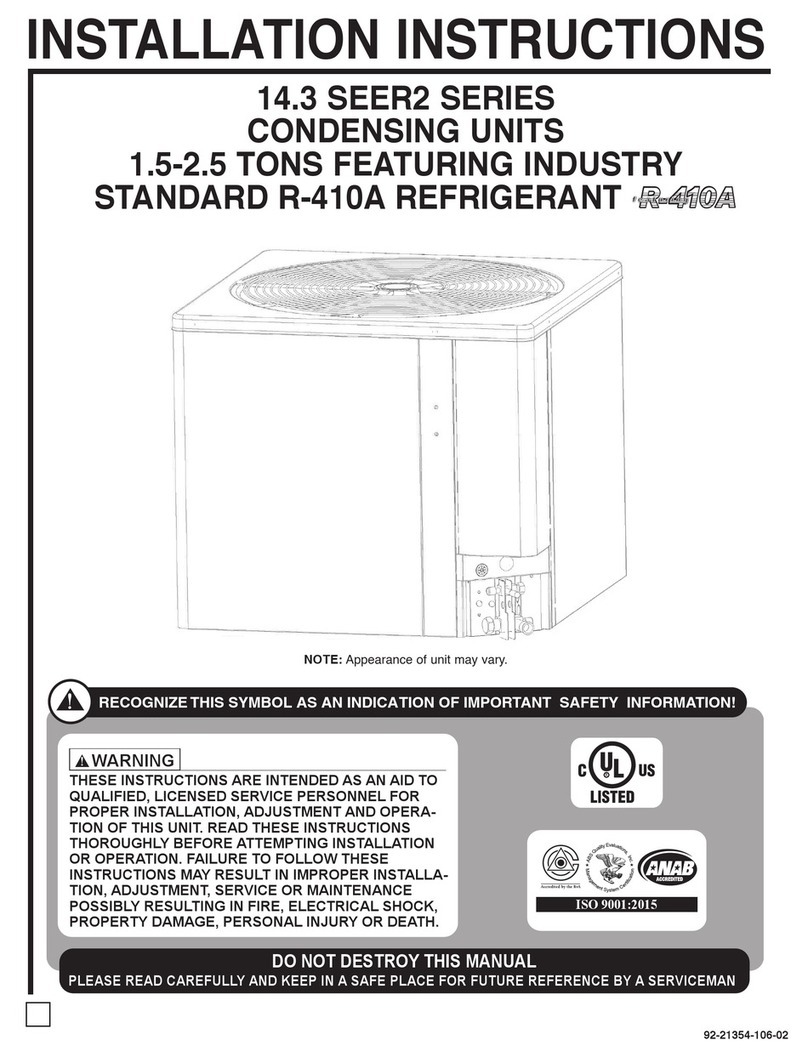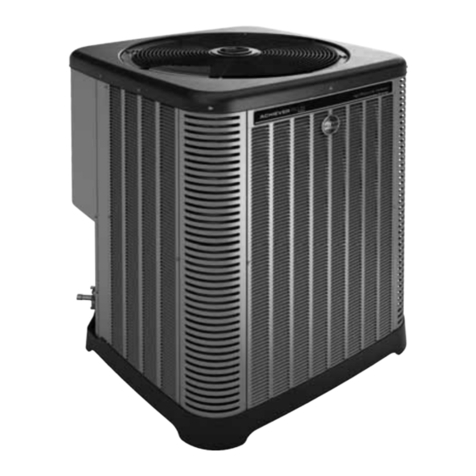
Safety
3
IMPORTANT SAFETY INFORMATION
WARNINGS:
• These instructions are intended as an aid to
qualified, licensed service personnel for proper
installation, adjustment, and operation of this
unit� Read these instructions thoroughly before
attempting installation or operation� Failure to
follow these instructions may result in improper
installation, adjustment, service, or maintenance
possibly resulting in fire, electrical shock,
property damage, personal injury, or death.
• The unit must be permanently grounded. Failure
to do so can cause electrical shock resulting in
severe personal injury or death.
• Turn off electric power at the fuse box or service
panel before making any electrical connections.
• Complete the ground connection before making
line voltage connections. Failure to do so can
result in electrical shock, severe personal injury,
or death.
• Disconnect all power to unit before starting
maintenance. Failure to do so can cause
electrical shock resulting in severe personal
injury or death.
• Never assume the unit is properly wired and/or
grounded. Always test the unit cabinet with a
noncontact voltage detector available at most
electrical supply houses or home centers before
removing access panels or coming into contact
with the unit cabinet.
• Do not use oxygen to purge lines or pressurize
system for leak test. Oxygen reacts violently with
oil, which can cause an explosion resulting in
severe personal injury or death.
• The top of the scroll compressor shell is hot�
Touching the compressor top may result in serious
personal injury�
• The manufacturer’s warranty does not cover
any damage or defect to the unit caused by the
attachment or use of any components, accessories,
or devices (other than those authorized by the
manufacturer) into, onto, or in conjunction with
the heat pump� You should be aware that the
use of unauthorized components, accessories,
or devices may adversely affect the operation
of the heat pump and may also endanger life
and property. The manufacturer disclaims any
responsibility for such loss or injury resulting
from the use of such unauthorized components,
accessories, or devices�
CAUTIONS:
• R-410A systems operate at approximately 60%
higher pressures (1�6 times) than R-22 systems� Do
not use R-22 service equipment or components on
R-410A equipment� Use appropriate care when using
this refrigerant� Failure to exercise care may result in
equipment damage or personal injury�
• Only match this outdoor unit with a matched indoor
coil or air handler approved for use with this outdoor
unit per the unit manufacturer’s specification sheet�
The use of unmatched coils or air handler will likely
result in a charge imbalance between the cooling
and heating modes which can cause unsatisfactory
operation including a high-pressure switch lockout
condition�
• Only use indoor coils approved for use on R-410A
systems� An R-22 coil will have a TXV or fixed
restrictor device that is not designed to operate
properly in an R-410A system and will result in
serious operational issues� The R-22 coil could also
contain mineral oil which is incompatible with the
POE oil used in R-410A systems and could result in
reliability issues with the compressor and TXVs�
• When coil is installed over a finished ceiling and/or
living area, it is required that a secondary sheet metal
condensate pan be constructed and installed under
the entire unit� Failure to do so can result in property
damage�
• The compressor has an internal overload protector�
Under some conditions, it can take up to 2 hours for
this overload to reset� Make sure overload has had
time to reset before condemning the compressor�
• UNIT MAY START SUDDENLY AND WITHOUT
WARNING� Solid red light indicates a thermostat
call for unit operation is present at the ICC control�
ICC control will attempt to start unit after short cycle
timer expires or, when in Active Protection mode, will
attempt to restart unit prior to Lockout mode�































